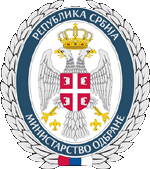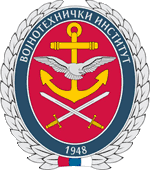|
REPUBLIC OF SERBIA MINISTRY OF DEFENCE
MINISTRY OF DEFENCE Material Resources Sector Defensive Technologies Department
|
TESTING OF PROTECTIVE AND PHYSIOLOGICAL PROPERTIES OF MEANS FOR ANTIMICROBIAL RESPIRATORY PROTECTION
Military Academy, University of Defense, Belgrade, negovan.ivankovic@gmail.com dušan rajić Innovation Centre, Faculty of Technology, University of Belgrade, rajic.dusan1@gmail.com željko senić Military Technical Institute, Belgrade, zsenic1@gmail.com MARINA ILIĆ Military Technical Institute, Belgrade, lemezalen@yahoo.com NIKOLA VUKOVić Faculty of Mining and Geology, University of Belgrade, vukovic.nik@gmail.com RADOVAN KARKALIć Military Academy, University of Defense, Belgrade, rkarkalic@yahoo.com NATAša Pajić Military Technical Institute, Belgrade, natasa.pajic@eunet.rs
Abstract: Air contamination by biological agents in form of aerosols, as consequence of natural epidemic or use of bioagents in war or terroristic purposes, continually imposes the need for improve means for personal respiratory protection. This paper presents the results of comparative testing the filtering effectiveness under conditions of simulated biological air contamination of four models of epidemiological mask (one market available and three prototypes) manufactured by "9 September", from Gornji Milanovac, Republic of Serbia. Also, it was tested their phisiological suitability for use, which is conditioned by applied nanotechnologies in their development. As a test substance and adequate physical simulator of bioaerosols, solid NaCl aerosol have been used. Determining the concentration of these aerosols has been carried out by flame photometry, and granulometric distribution by electric particle analyzer. Inhalation resistance of the tested samples has been measured by differential ''U'' water meter pressure drop. It has been determined high efficiency and physiological suitability of epidemiological mask in case of user's respiratory organs exposure to bioagents contamination. Keywords: protection respiratory protection, epidemiological mask, biological agents, nanomaterials.
|
|||||
|
||||||

